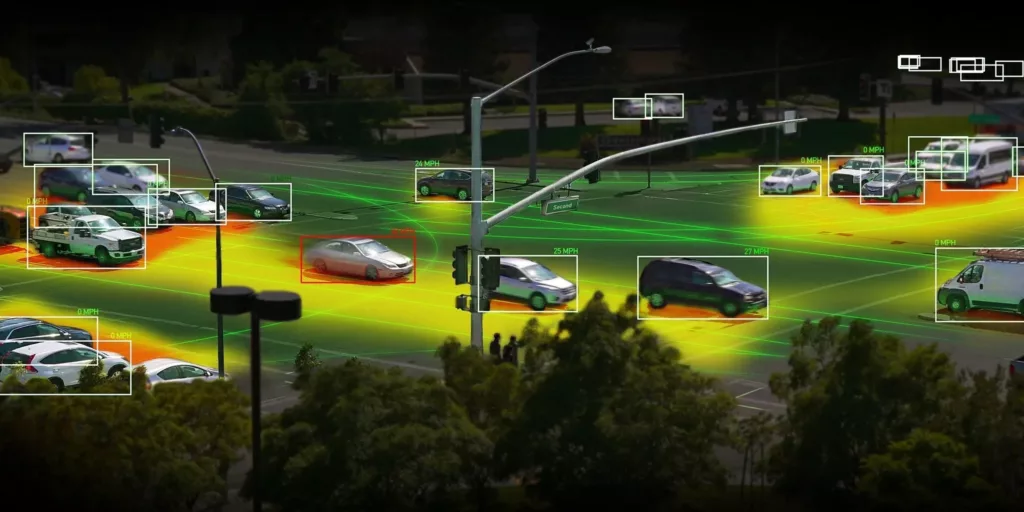Harnessing Real-Time Video Analytics with DeepStream, GStreamer, and CUDA
Harnessing Real-Time Video Analytics with DeepStream, GStreamer, and CUDA

In the realm of real-time video analytics, the integration of cutting-edge technologies is essential to unlock the full potential of data processing. NVIDIA DeepStream, in combination with GStreamer and CUDA, offers a powerful framework for developers to build intelligent video analytics applications that can handle large-scale data processing in real-time. In this blog post, we’ll delve deep into the synergy between DeepStream, GStreamer, and CUDA, and explore how they revolutionize real-time video analytics.
DeepStream: AI-powered Video Analytics:
DeepStream, developed by NVIDIA, is an advanced software platform that leverages artificial intelligence and deep learning to extract valuable insights from video and sensor data in real-time. It provides developers with a comprehensive framework to build intelligent video analytics applications.
DeepStream’s architecture allows for real-time processing of large amounts of data streams, making it highly efficient for applications that require immediate insights and actions. It integrates seamlessly with GStreamer, an open-source multimedia framework, to handle multimedia data processing tasks.
GStreamer: Flexible Multimedia Framework:
GStreamer serves as the backbone for multimedia processing in DeepStream. It is an open-source framework that offers a flexible and modular architecture for handling multimedia data. GStreamer provides a vast collection of plugins and elements that enable tasks such as video decoding, encoding, filtering, and visualization.
Developers can leverage GStreamer’s capabilities to acquire video and sensor data from various sources, including live video feeds, cameras, and sensors. Additionally, GStreamer’s pipeline architecture ensures efficient and seamless data flow between different processing stages, optimizing performance and minimizing latency.
CUDA: GPU Acceleration for High Performance:
CUDA, NVIDIA’s parallel computing platform, utilizes the immense power of GPUs for accelerated computing. DeepStream leverages CUDA to achieve high performance and scalability in real-time video analytics. By offloading computation-intensive tasks to the GPU, CUDA significantly speeds up data processing, allowing for rapid analysis of multiple video streams simultaneously.
The parallel processing capabilities of GPUs enable DeepStream to execute AI algorithms efficiently. This acceleration enhances the performance of tasks such as object detection, tracking, classification, and more. As a result, real-time analysis becomes feasible, even with large-scale data processing.
Integration and Workflow:
The integration of DeepStream, GStreamer, and CUDA forms a powerful workflow for real-time video analytics.
The workflow begins with data acquisition and preprocessing. GStreamer facilitates the acquisition of video and sensor data from diverse sources, while its elements preprocess the acquired data to enhance quality, reduce noise, and convert it into suitable formats for analysis.
DeepStream seamlessly integrates with GStreamer, leveraging its plugins to enable AI-powered analytics. It supports pre-trained AI models or custom-developed deep learning algorithms for tasks like object detection, tracking, and classification. CUDA acceleration further enhances the performance of these algorithms by harnessing the parallel processing capabilities of GPUs.
During real-time processing and analysis, DeepStream handles multiple data streams simultaneously, enabling instant insights and actions. GStreamer’s pipeline architecture ensures efficient data flow between different processing stages, optimizing performance and minimizing latency.
Based on the analysis results, DeepStream triggers events or actions in real-time. These events could include detecting specific objects, recognizing anomalies, or generating alerts and notifications. The integration of DeepStream with external systems enables seamless actions such as sending alerts, storing relevant data, or triggering automated responses.

DeepStream Overview
Key Features and Benefits:
-
Real-time Video Analytics: DeepStream allows developers to analyze multiple video streams simultaneously in real-time, enabling the extraction of valuable insights in mission-critical applications such as security surveillance, smart cities, and industrial automation.
-
Intelligent Metadata Extraction: The platform employs deep learning models to extract meaningful metadata from video streams, such as object detection, classification, and tracking. This metadata can be used for a wide range of applications, including anomaly detection, crowd management, and behavior analysis.
-
Scalability and Performance: DeepStream utilizes GPU-accelerated computing to achieve high throughput and low latency video processing. It enables the deployment of applications across edge devices, data centers, and cloud environments, ensuring scalability and flexibility.
-
Integration with AI Frameworks: DeepStream seamlessly integrates with popular deep learning frameworks like TensorFlow, PyTorch, and Caffe, allowing developers to leverage pre-trained models and rapidly prototype and deploy their AI-powered video analytics applications.

Vehicle Speed Detection System
Applications and Benefits:
The integration of DeepStream, GStreamer, and CUDA enables a wide range of real-time video analytics applications:

Surveillance Application
Conclusion:
The integration of DeepStream, GStreamer, and CUDA forms a powerful trio that revolutionizes real-time video analytics. By combining AI-powered analytics, a flexible multimedia framework, and GPU acceleration, developers can build intelligent applications that process and analyze video and sensor data in real-time. As the demand for real-time video analytics continues to grow, the synergy between DeepStream, GStreamer, and CUDA paves the way for advanced solutions that enable faster and more accurate decision-making in various domains.
Related content
Auriga: Leveling Up for Enterprise Growth!
Auriga’s journey began in 2010 crafting products for India’s
